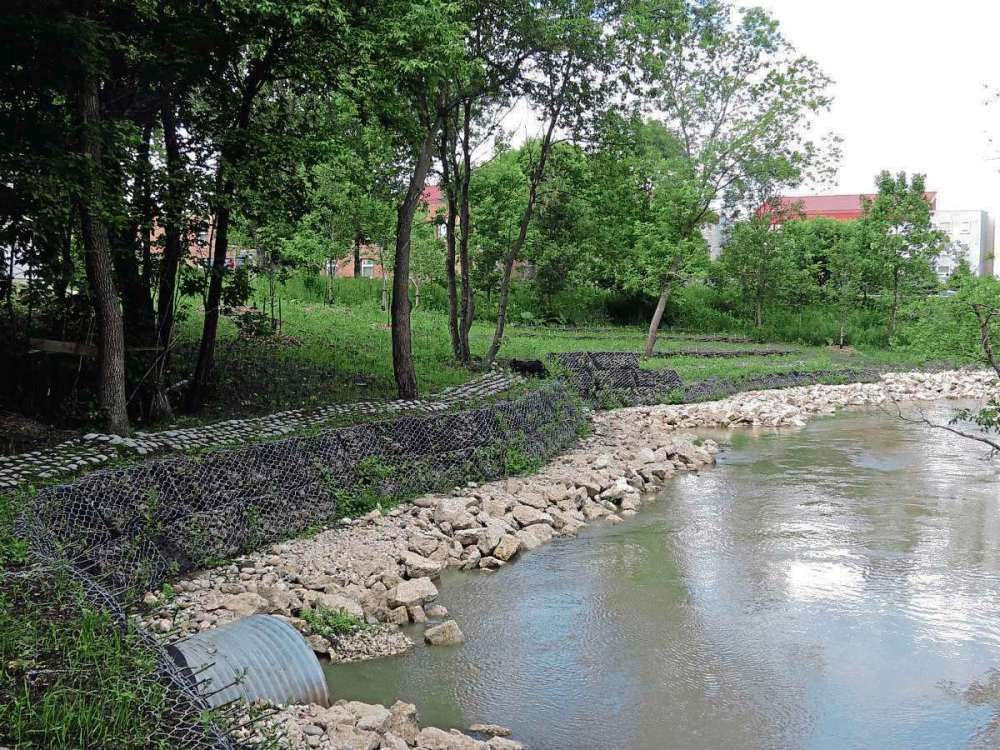The art of the science of erosion control
Advertisement
Hey there, time traveller!
This article was published 10/07/2017 (3005 days ago), so information in it may no longer be current.
If you have paddled the Seine River, you have probably seen some sections of riverbank are lined with large stones. This is called rip-rap. Riverbank engineers use it to reduce erosion along the riverbank.
You may also have noticed that rip-rap is usually on the outside curve of the river. This is where fast-moving water strikes the riverbank, removes loose soil material and carries it downstream. The faster the water is moving, the greater the erosion. Even slow-moving water picks up light particles, like silt and clay. Fast-moving water can pick up sand, pebbles, and even stones.
Removal of natural vegetation on river banks increases erosion. Deep-rooted trees and shrubs can withstand temporary floods. They hold the soil in place. Shallow-rooted sod does not.

Erosion would be largely unnoticed if the river had enough space to meet its needs. The river would remove soil materials on its outside curves. It would create new land by depositing materials on inside curves.
Today, Winnipeg is paying the price for encroaching on space the river needs. We must pay to fix the river banks that are rapidly eroding or we risk losing riverfront trails, parks, and private property.
Addressing the problem of streambank erosion requires knowledge of both stream dynamics and streamside vegetation.
Rip-rap is the traditional technique to control erosion on riverbanks. It can withstand the force of fast-flowing water. Rip-rap or gabions (wire baskets filled with rock) are called “hard armouring.” While they solve the erosion problem, they often do so at the expense of habitat and natural beauty.
Bioengineering techniques use plant materials in a structural way to stabilize stream banks.
“Soft armouring” is often less expensive than rip-rap or gabion. It is also environmentally-sound, attractive, and self-sustaining.
Winnipeg is testing a variety of erosion control techniques at John Bruce Park. Take a walk along the Gabriel Dufault Trail to see the results.
Traditional rip-rap protects the toe of the bank. Gabion baskets replace a steep slope where space is limited. Living willow sticks protrude from the streamside face of the gabion baskets. Their intertwining roots will add stability to the streambank. Terraces use low “fences” of natural material to reduce erosion. The bank is planted with a variety of deep-rooting native grasses and wildflowers.
The benefits of creative bank stabilization go beyond simply preventing loss of land. Healthy streamside vegetation creates habitat and adds beauty to the landscape.
Michele Kading is a community correspondent for St. Vital and the executive director of Save Our Seine — www.saveourseine.com

Michele Kading
St. Vital community correspondent
Michele Kading is a community correspondent for St. Vital. She is also the executive director of the Association of Manitoba Museums.
Our newsroom depends on a growing audience of readers to power our journalism. If you are not a paid reader, please consider becoming a subscriber.
Our newsroom depends on its audience of readers to power our journalism. Thank you for your support.




